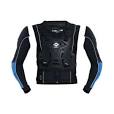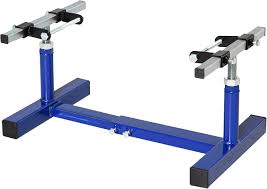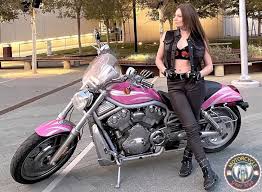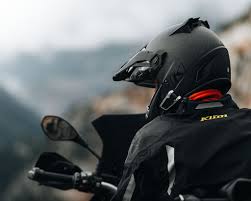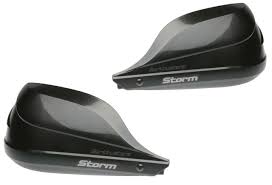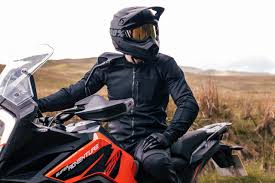Enhance Your Ride: The Importance of Handguard Bike for Safety and Comfort

The Importance of Handguards for Your Bike
Riding a bike can be an exhilarating experience, whether you’re cruising down the open road or tackling challenging off-road trails. However, it’s important to ensure that you have the necessary safety gear to protect yourself and your bike. One essential piece of equipment that often gets overlooked is handguards.
Handguards are protective shields attached to the handlebars of a bike. They serve multiple purposes, all aimed at keeping you safe and enhancing your riding experience.
Protection from Debris
When riding off-road or in challenging conditions, your hands are exposed to flying debris such as rocks, branches, and mud. Handguards act as a barrier between these hazards and your hands, preventing injuries and ensuring a comfortable ride.
Shield from Weather Elements
Handguards also provide protection from the elements. Whether it’s rain, wind, or cold temperatures, handguards help shield your hands from harsh weather conditions, allowing you to maintain better control of your bike and stay comfortable during your ride.
Enhanced Safety
In case of a fall or collision, handguards can help prevent injuries by providing an additional layer of protection for your hands and wrists. They can reduce the risk of cuts, bruises, and more serious injuries that may occur during accidents.
Improved Aesthetics
Besides their practical benefits, handguards can also enhance the look of your bike. Available in various styles and colours, they allow you to customise your bike’s appearance while adding a touch of personality to your ride.
Overall, handguards are an essential accessory for any rider looking to enhance their safety and comfort while on the road or trail. Investing in quality handguards is a small yet significant step towards ensuring a more enjoyable and secure biking experience.
Essential Tips for Maintaining and Enhancing Your Bike’s Handguards
- Ensure the handguard is securely attached to the handlebars for maximum protection.
- Choose handguards that are made of durable materials to withstand impact and weather conditions.
- Regularly check and tighten any screws or bolts on the handguards to prevent them from becoming loose during rides.
- Adjust the position of the handguards to ensure they provide adequate coverage and do not obstruct your view while riding.
- Clean your handguards regularly to remove dirt, debris, and moisture that can accumulate and affect their performance.
- Consider investing in additional accessories like wind deflectors or heated grips for added comfort and protection.
Ensure the handguard is securely attached to the handlebars for maximum protection.
To maximise protection while riding, it is crucial to ensure that the handguard is securely attached to the handlebars of your bike. A properly installed handguard provides a solid barrier against debris, weather elements, and potential injuries in case of accidents. By securely fastening the handguard, you can ride with confidence knowing that your hands are well-protected, allowing you to focus on enjoying your ride without worrying about safety concerns.
Choose handguards that are made of durable materials to withstand impact and weather conditions.
When selecting handguards for your bike, it is crucial to opt for those crafted from durable materials that can withstand impact and varying weather conditions. By choosing handguards made of robust materials, you ensure that they provide effective protection for your hands against debris and the elements while riding. Investing in high-quality handguards not only enhances your safety on the road or trail but also ensures longevity and reliability in challenging riding environments.
Regularly check and tighten any screws or bolts on the handguards to prevent them from becoming loose during rides.
It is crucial to regularly inspect and tighten all screws and bolts on your handguards to prevent them from loosening while riding. Loose handguards can compromise their effectiveness in protecting your hands from debris and weather elements. By ensuring that all fasteners are secure, you can maintain the integrity of your handguards and ride with confidence, knowing that they will provide the necessary protection when you need it most.
Adjust the position of the handguards to ensure they provide adequate coverage and do not obstruct your view while riding.
It is crucial to adjust the position of your handguards on your bike to guarantee sufficient coverage and avoid obstructing your view while riding. Properly positioned handguards act as a protective shield against debris and weather elements, enhancing safety and comfort during your ride. By ensuring that the handguards are correctly adjusted, you can maintain clear visibility of the road ahead while benefitting from the added protection they offer, ultimately contributing to a safer and more enjoyable biking experience.
Clean your handguards regularly to remove dirt, debris, and moisture that can accumulate and affect their performance.
Regular maintenance of your handguard bike is crucial for optimal performance and longevity. It is recommended to clean your handguards regularly to remove dirt, debris, and moisture that can accumulate over time. By keeping them clean, you ensure that they continue to provide effective protection for your hands and maintain their functionality. Regular cleaning not only enhances the appearance of your handguards but also prevents any build-up that could potentially affect their performance when you need them the most. A simple cleaning routine can go a long way in preserving the quality and effectiveness of your handguards, allowing you to ride with confidence and peace of mind.
Consider investing in additional accessories like wind deflectors or heated grips for added comfort and protection.
When equipping your bike with handguards, it’s wise to consider investing in additional accessories to enhance your riding experience further. Accessories such as wind deflectors can provide extra protection against strong winds, while heated grips can offer added comfort during chilly rides. These supplementary accessories not only increase your comfort levels but also contribute to a safer and more enjoyable biking experience overall. By investing in these extras, you can ride with greater ease and peace of mind, knowing that you are well-equipped for various weather conditions and road challenges.


